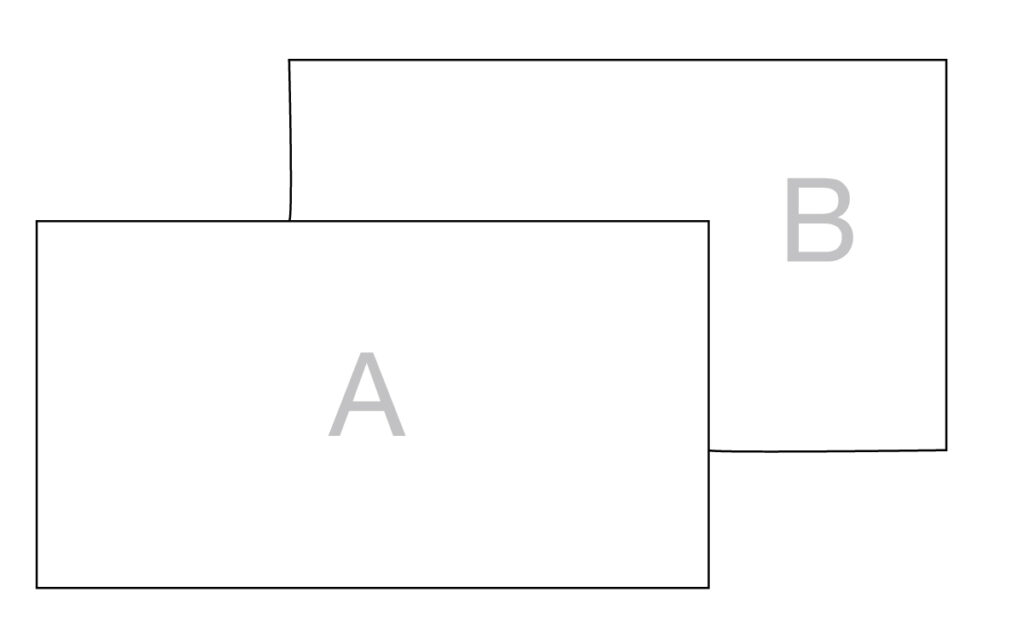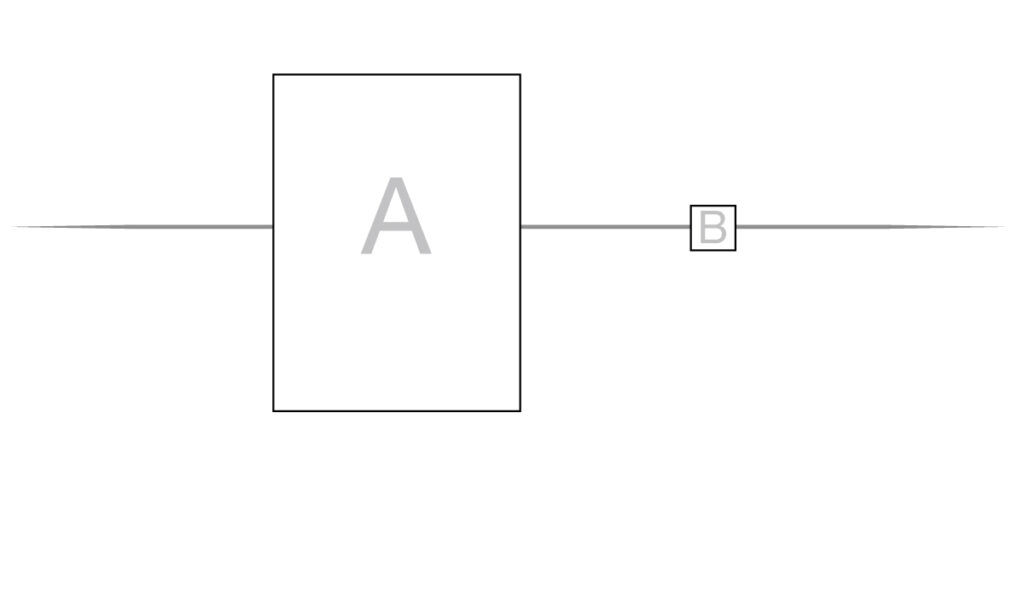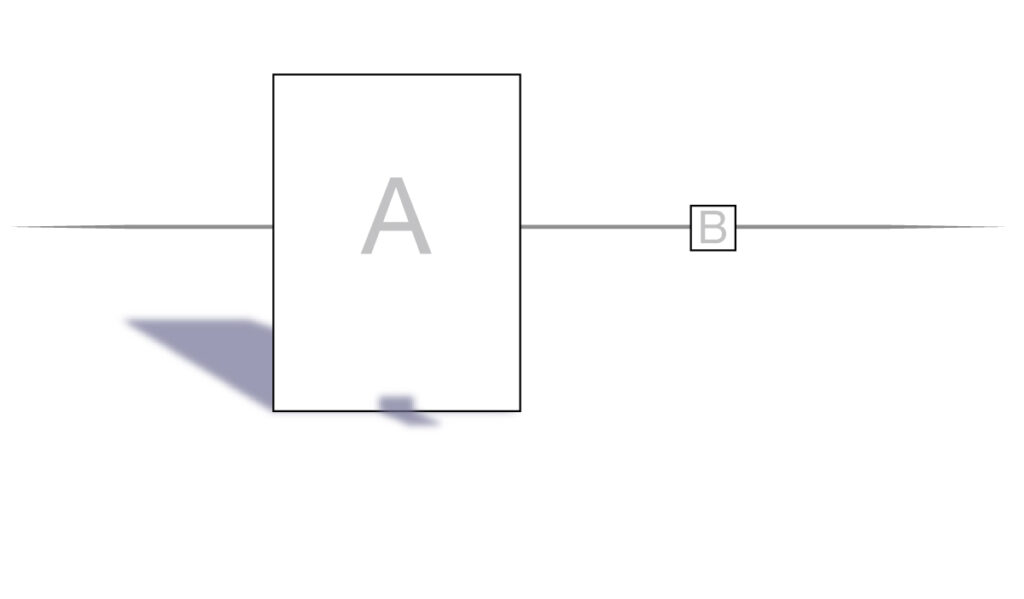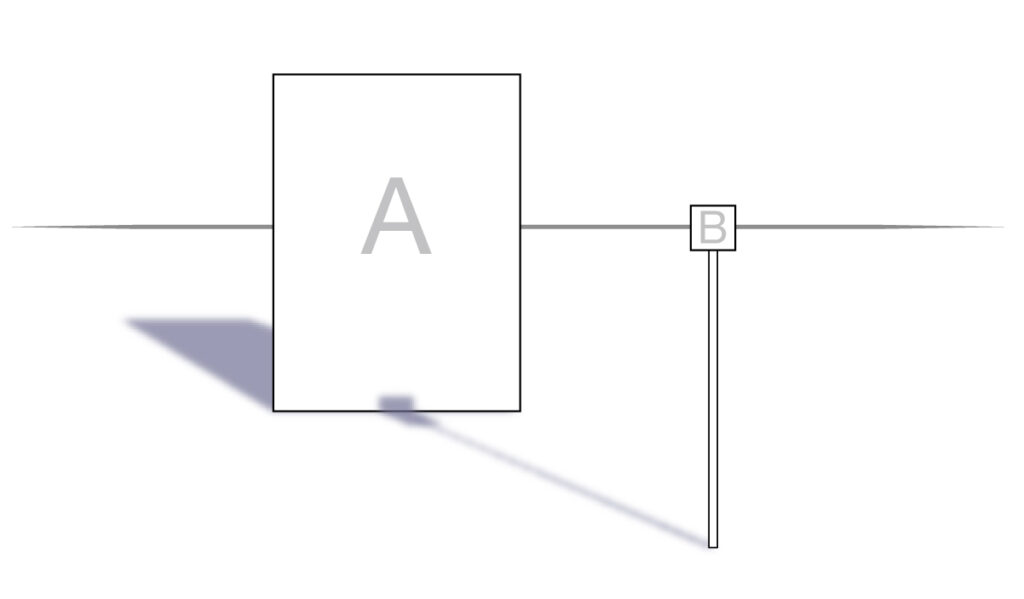Look with your eyes not with your hands.
– Every parent of a toddler
Perceptual Psychology: Depth Cues
One of the challenges in making two dimensional art (drawing or painting) is how to make a flat, still surface have depth and movement. It helps to have an understanding of perceptual psychology and cognitive science.
Take a look at the image below and decide for yourself which object is closer A or B. Plate 1

I’ve shown this image to thousands of people and nearly all conclude that A is closer than B. Now ask yourself- How did you arrive at this conclusion?
Did it occur to you that Object B was shaped like this? Plate 2

Why Not? It turns out that we have to learn how to see. We don’t learn how to let photons enter our eyes that happens naturally. We learn how to make sense out of the billions of photons that enter our eyes every second. When a toddler reaches for an object (and the parent shouts what every parent shouts) the toddler is trying to learn how to process all those photons. It is learning about how far or near the object is. Is the object hard or soft, cold or hot, rough or smooth? The toddler is compiling a database of experience with physical properties that it will later rely on by sight alone (mostly).
When you decided that Object A is closer than Object B you relied on that database and you made assumptions based on probabilities. The probability that Object B is shaped like Plate 2 and perfectly coincidental to Object A rather than another similar rectangle behind Object A is very low. You assumed the most likely condition over the coincidence.
We assume a Generic View.
– Donald Hoffman
In this case the assumptions are based on a series of depth cues. The most obvious depth cue is Occultation or overlap. The assumption being that both objects are rectangles. Elevation or the relative hight of the object on the picture plane is another Depth Cue. Objects higher on the picture plane are assumed to be farther away rather than floating.
Light & Shadow Cues
Now take a look at the image below. Plate 3

Light and shadow also give us cues about depth perception. We make a series of subconscious calculations about the light source, its direction and the cast shadows to assume which object is closer. All these assumption occur in this simple and abstract example.
Linear Perspective Cues
What if we add more context? Now which object is closer A or B? Plate 4

Did you say Object A again? Linear Perspective is another Depth Cue we use to determine whether an object is near or far. Linear Perspective is the rule that objects decrease in size, at the same rate, as they get farther away. Elevation may also help determine the objects location with this diagram.
What happens when we add shadows to the two objects? Plate 5

Object B moves forward if we trust our experience with cast shadows. Object B is also floating which contradicts our typical experience. If the Object B was shaped like a bird or a balloon then we may have conflicted opinions about its location in Plate 4. As a bird or balloon Object B would satisfy the Familiar Size depth cue.
Now take a look at this diagram. Plate 6

The position of the objects reconciles with the shadows and our common experience. It all comes down to probabilities.
People only see what they are prepared to see.
– Ralph Waldo Emerson
